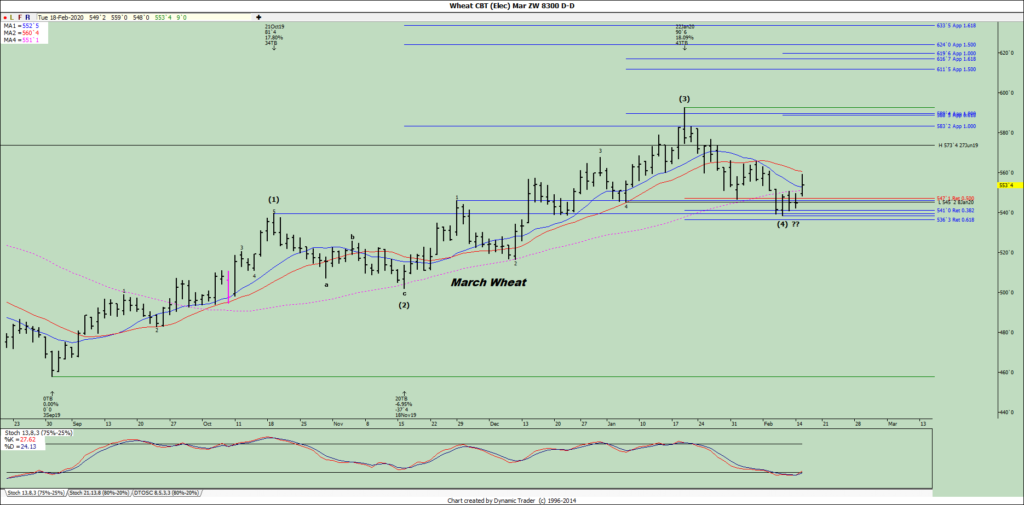Phase One of the new U.S./Chinese trade agreement became official over the weekend, but that does not appear to be the key driver for grain and soy prices this morning. No, that honor would seem to go to concerns about declining global wheat supplies. The Australian government has now lowered its wheat production estimate down to just 15.17 MMT versus the December estimate of 15.85 and will mark the lowest output since 2008. The USDA had the crop at 15.60 in the latest report, and some private estimates believe the crop is actually closer to 14.5. This could mean exports will be limited to 7 to 7.5 MMT for the crop year, which compares to just over 9 MMT in 2018/19 and 13.85 MMT in 2017/18. While futures prices did not get carried away overnight, we did push through levels that have recently been capping this market, and if we can hold, would seem to be suggesting that the path of least resistance in the market will be to the upside. This should be a reminder that we are in the supply phase of the overall commodity cycle, and the majority of price swings should be driven by changes in supply more so than changes in demand.
All that said, a boost in demand right now would not hurt anything, and while there have been no signs yet of an overwhelming surge of demand from China, the government there appears to be doing all they can to grease the slide. The first move they made over the weekend was to give blanket approval for the import of all poultry and poultry products from the United States. There was limited approval given back in November, but obviously, the combination of the outbreak there of avian flu, the coronavirus and trade agreement, not to mention what has happened with their hog herd, has enabled them to “see the light” and open the door for more meat protein. Now this morning, they have announced that they would be granting tariff exemptions on an additional 696 products to be imported from the United States, including pork, beef, and beans. One might almost suspect that one of the risks to increased trade to China this year might be due to civil unrest after the mishandling of both animal and human virus outbreaks and an economy that continue to sputter. You can count on more and more economic stimulus in the days/weeks ahead.
Good weather has allowed the Brazilian bean harvest to forge ahead and, as of the end of last week, was estimated to be 27.45% complete, compared with the average at this date of 25.2%. A number of private consultants have now raised the production estimate into the 125 to 125.6 MMT zone, including the USDA. In the state of Mato Grosso, the planting of safrinha corn has reached 63.1%, well behind last year’s blistering pace of 74.2%, but still ahead of the average of 52.1%. Production estimates fall in between 100 and 101 MMT, and last year they produced a crop of 101. Weather has been favorable in Argentina as well, and some bean harvest should begin within the next week. The crop is rated 71% good/excellent, and the production estimate sits between 53 and 54 MMT, compared with 55.3 last year. The corn crop there is rated 62% good/excellent, and production estimates are in the 49 to 50 MMT zone, versus 51 last year.
